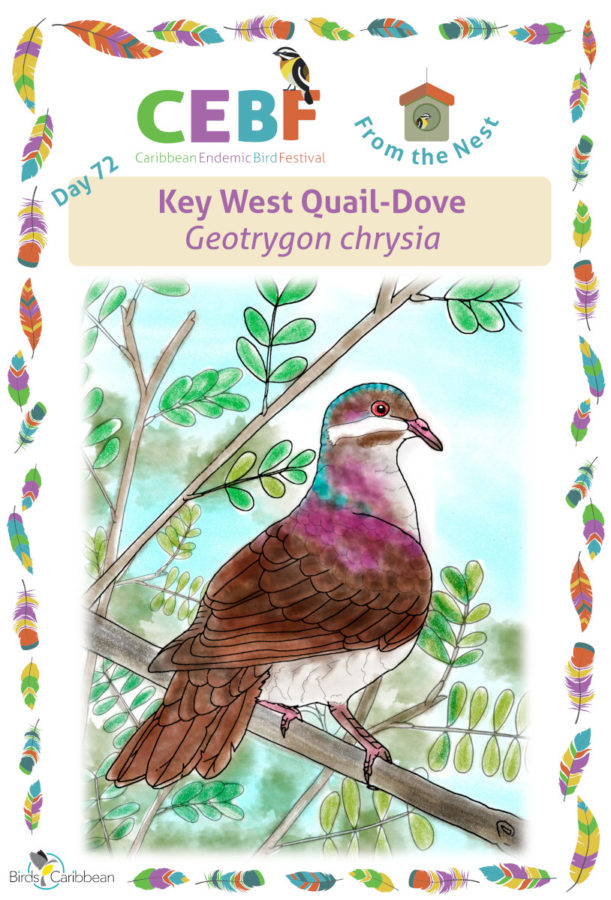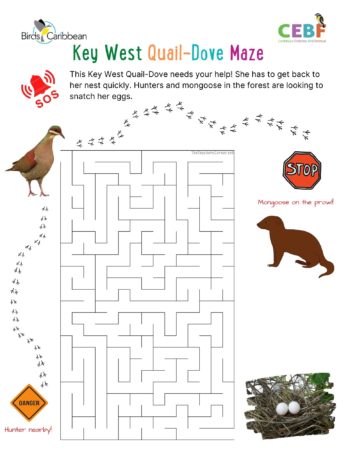Celebrate the Caribbean Endemic Bird Festival (CEBF) with us! Our theme in 2021 is “Sing, Fly, Soar—Like a Bird!” Have fun learning about a new endemic bird every day. We have colouring pages, puzzles, activities, and more. Download for free and enjoy nature with your family at home.
Endemic Bird of the Day: Key West Quail-Dove
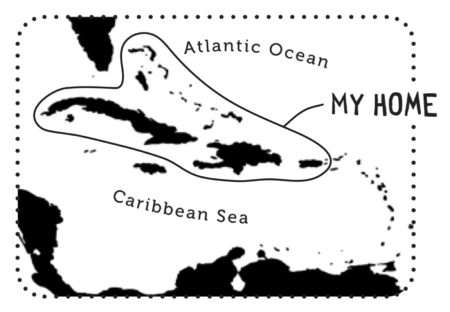 Key West? Well, despite its name, you are very unlikely to see this bird in Key West. Although it was first discovered in the Florida Keys, it is now just an occasional vagrant there. It is a truly Caribbean island bird, endemic to The Bahamas, Turks and Caicos Islands, Cuba, Hispaniola, and Puerto Rico.
Key West? Well, despite its name, you are very unlikely to see this bird in Key West. Although it was first discovered in the Florida Keys, it is now just an occasional vagrant there. It is a truly Caribbean island bird, endemic to The Bahamas, Turks and Caicos Islands, Cuba, Hispaniola, and Puerto Rico.
This is a great loss for Florida, because the Key West Quail-Dove, a chunky, round bird (170 g, 28-30 cm), is strikingly beautiful. The iridescent bluish-green and bronze head and neck of the adult male is accented by a broad white facial stripe. The purple and bronze iridescence on his back and wings contrast with his pale pinkish-grey breast that fades into whitish on the belly. The female looks similar, but her colors are generally more subtle and less iridescent. The plumage of a juvenile is duller, with whitish margins on the wing coverts.
This elegant bird is can be found in both arid and moist habitats: coastal thickets, swamp forest, semi-arid woodland, wet montane forest, semi-deciduous and evergreen woods. It favors the understory up to at least 500 m in elevation, but is found up to at least 1,000 m in Dominican Republic.
The Key West Quail-Dove is a secretive bird, difficult to detect on the forest floor. Listen for a rustling of leaves and you may be lucky to spot it as it quietly rummages around looking for fruit, seeds, insects, and small snails to eat. From the dense vegetation you might also hear its deep, mournful call, consisting of a single, repeated hoooooo. The call usually lasts about 1.4 seconds, increasing in volume and then fading and sliding slightly downward in pitch at the end.
This bird generally breeds from February to August. It builds a nest near the ground or low in trees, laying two buff-colored eggs. It is solitary outside the breeding season.
The Key West Quail-Dove is considered a common resident throughout most of its range, but is declining in some islands. Sadly, it is threatened by habitat fragmentation and hunting. You can help this beautiful bird and others to survive by supporting conservation of habitat on your island. Learn more about this species, including its range, photos, and calls here.
Colour in the Key West Quail-Dove
Download our West Indies Endemic Bird colouring page. Use the photos below as your guide, or you can look up pictures of the bird online or in a bird field guide if you have one. Share your coloured-in page with us by posting it online and tagging us @BirdsCaribbean #CEBFfromthenest
Listen to the song of the Key West Quail-Dove
The song of the Key West Quail-Dove is a soft, low-pitched, mournful “hooooooo.”
Puzzle of the Day
Click on the image below to do the puzzle. You can make the puzzle as easy or as hard as you like – for example, 6, 8, or 12 pieces for young children, all the way up to 1,024 pieces for those that are up for a challenge!
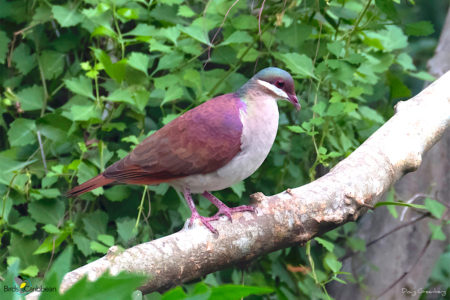
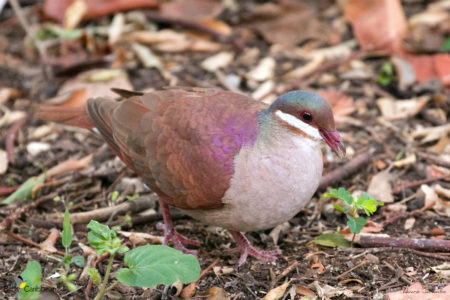
Activity of the Day
FOR KIDS: Breeding season for the Key West Quail-Dove is between September and July. This Caribbean endemic dove builds its nests on the ground or sometime low-down in a tree. This makes their eggs vulnerable to predators, including the Indian Mongoose, which has been introduced to the Caribbean from Asia. Can you help the Key West Quail-Dove find her way through our maze and save here eggs from a hungry mongoose? You can find the correct route here.
FOR KIDS AND ADULTS: Enjoy this video of a Key West Quail-Dove in the wild! This bird was seen in Ciego de Ávila, Cuba. The video shows a Quail-Dove on the ground foraging. You can see the beautiful iridescent plumage on the birds head and neck.

